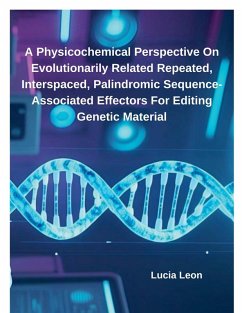
A Physicochemical Study Examining How Low-Molecular-Weight Molecules Influence Polypeptide Fibril Formation And The Resulting Structural Changes
Versandkostenfrei!
Versandfertig in 1-2 Wochen
30,99 €
inkl. MwSt.

PAYBACK Punkte
15 °P sammeln!
Development of amyloidopathies including Alzheimer's disease, Parkinson's disease, Amyotrophic lateral sclerosis (ALS), Huntington's disease, etc. has been a warm debate now days as the number of patients exhibiting the symptoms of aforementioned diseases has got doubled in the recent decades because of the sedentary activities and change in the lifestyles (Booth et al., 2011; Lin & Beal, 2006; Shimizu, 2018). While a clear idea of how the fibrillation process leads to the development of such fatal ailments is not yet known despite of the significant efforts that have been made. Until now, onl...
Development of amyloidopathies including Alzheimer's disease, Parkinson's disease, Amyotrophic lateral sclerosis (ALS), Huntington's disease, etc. has been a warm debate now days as the number of patients exhibiting the symptoms of aforementioned diseases has got doubled in the recent decades because of the sedentary activities and change in the lifestyles (Booth et al., 2011; Lin & Beal, 2006; Shimizu, 2018). While a clear idea of how the fibrillation process leads to the development of such fatal ailments is not yet known despite of the significant efforts that have been made. Until now, only symptomatic treatments are available, though there are various strategies that are currently being exploited for the symptomatic treatment of amyloidopathies, as well as for eliminating their main cause, namely the formation of amyloid fibrils and oligomers. Human insulin (HI) is a chemical messenger that helps in the regulation of blood glucose level, synthesized by the beta cells of pancreas (Röder et al., 2016; Rorsman & Ashcroft, 2017). HI is actually a heterodimeric protein consisting of two polypeptides i.e., chain A and chain B (21 and 30 amino acids long respectively) cross linked via three disulfide bonds (two interchain and one intrachain) (Weiss et al., 2014). HI predominantly exists in alpha helical conformation as residues A1-A8, A13-A20 and B11-B19 constitute three alpha helices in chain A and B respectively (Fu et al., 2013). Human HI is stored as hexamer in co-ordination with the zinc metal ion. In the monomeric and dimeric form HI is more prone towards aggregation which has affected its utilization in the pharmaceutical industries (Weiss et al., 2014; Pandyarajan et al., 2014). Instead of being crucial hormone for the treatment of type II diabetes, HI undergoes the fibrillogenesis at the site of injection causing injection amyloidosis in addition to the type II diabetes (Nilsson, 2016).












